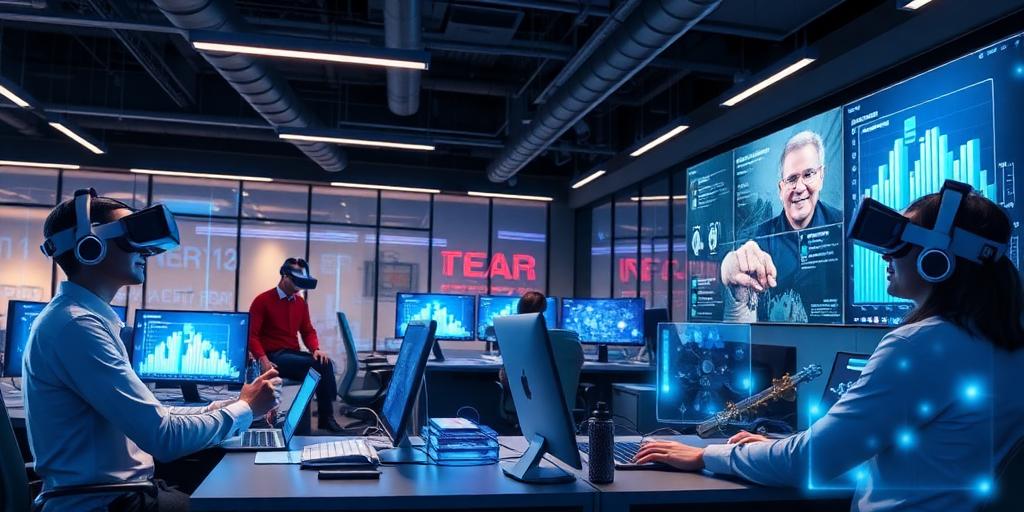The Role of VR/AR in Remote Work and Training (2025)
The landscape of remote work and training is undergoing a significant transformation, and Virtual Reality (VR) and Augmented Reality (AR) technologies are at the forefront of this evolution. As we move into 2025, the integration of VR/AR is no longer a futuristic concept but a tangible reality that is reshaping how businesses operate, collaborate, and educate their workforce.
Enhanced Remote Collaboration
Traditional remote work setups often lack the sense of presence and engagement that comes with in-person interactions. VR/AR technologies bridge this gap by creating immersive virtual environments where remote teams can collaborate as if they were physically together. Imagine attending a virtual meeting where colleagues appear as avatars in a shared 3D space, or collaborating on a virtual whiteboard in real-time. This enhanced sense of presence fosters better communication, teamwork, and overall productivity.
Immersive Training Experiences
VR/AR offers unparalleled opportunities for creating immersive and interactive training experiences. Whether it’s simulating real-world scenarios, providing hands-on practice with virtual equipment, or offering personalized learning paths, VR/AR training can significantly improve knowledge retention and skill development. This technology is particularly valuable for industries that require high-risk training, such as healthcare, manufacturing, and aerospace, where mistakes can have serious consequences.
Streamlined Onboarding and Knowledge Transfer
Onboarding new employees and transferring knowledge across teams can be challenging in remote settings. VR/AR can streamline these processes by providing immersive onboarding experiences, virtual tours of facilities, and interactive simulations of workflows. This not only accelerates the learning curve but also ensures consistency in training and knowledge transfer, regardless of location.
The Future of Remote Work and Training
As VR/AR technologies continue to advance, we can expect even greater integration into remote work and training environments. From personalized virtual assistants to AI-powered training simulations, the possibilities are endless. By embracing these technologies, businesses can unlock new levels of productivity, engagement, and innovation in the remote work landscape.
In conclusion, VR/AR is poised to revolutionize remote work and training by creating immersive, interactive, and collaborative experiences. As we move into 2025, businesses that embrace these technologies will gain a competitive edge in attracting, retaining, and developing talent in an increasingly remote world.
